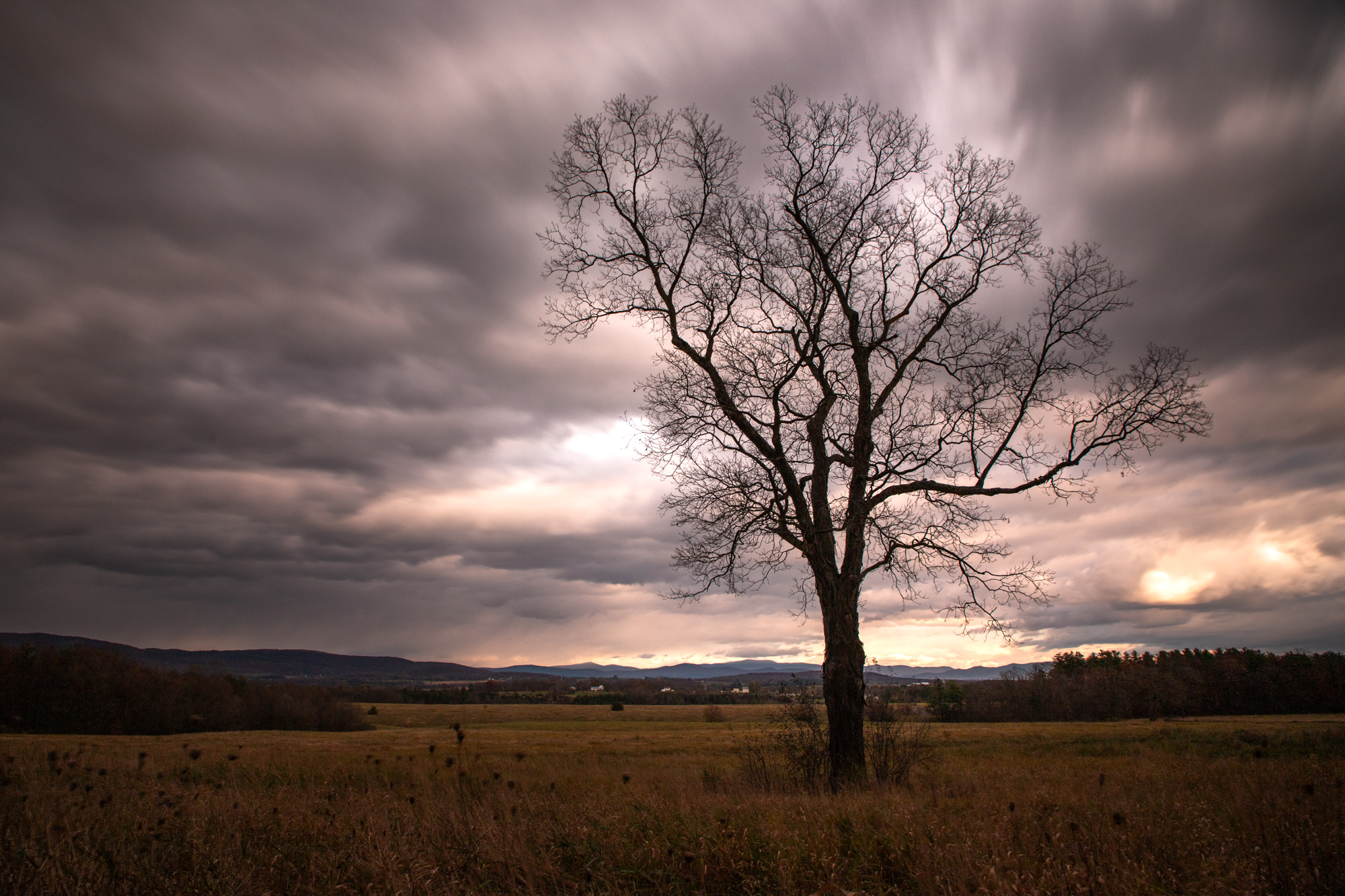Come stick season, us photographers are forced to get creative in order to find something beautiful outside to frame in their viewfinders. I am used to this challenge. What’s more, I like it. I have always sought beauty in unlikely places and in unfavorable conditions. I’m a wanderer, always up for an adventure no matter what the weather – against my better judgement, perhaps (my equipment has always been forced to endure elements it probably shouldn’t). A friend once commented on a photo I took of wild fennel on a hilltop in New Zealand on a cloudy day: “you always notice something beautiful in boring, commonplace things that most people walk right by.” I appreciated the truth of that observation. I’m not someone who has the time or resources to travel specifically for photography (yet), so I make do with what I find in my backyard.
So on an overcast and otherwise typically dreary November afternoon last week, I took a tripod, camera and three lenses and went out to see what I could find. I drove around the less-travelled dirt roads next to Lake Champlain where it’s mostly flat and agricultural. There are craggy, barren trees dotting the big fields that have the potential to be the foreground subjects of wide-angle, big-sky landscapes. I’m always on the lookout for particularly pleasing trees with some kind of beauty in their symmetry – or asymmetry, to be more accurate.
I soon spotted one such tree that seemed to meet the profile I was looking for. I pulled over, walked out into the chest-high grass, set up my tripod and took a few shots of the tree from different angles. Given the thick cloud cover I was doubtful about getting a decent shot. But then I found one angle that worked better than others, with the Green Mountains on the horizon where a little bit of sun provided some interest. I filled the frame with 3/4 sky, aiming to showcase the silhouette of this lone tree. Noticing that the clouds were moving at a good rate, I decided to throw my black filter on and try some long exposures. The lackluster light would help me achieve long 20-30 second exposures. I was instantly pleased with the results. I got quite a bit of movement in the clouds at the top of the photo while keeping the tree and background in focus. This created a sense of movement and drama behind the fetching silhouette. Cool! I experimented with a few different framings and settings before packing up, excited to see the photos on my laptop.
Later in Lightroom I worked awhile before arriving at the image you see here. I took time trying different crops, white balance and foreground exposure. It’s always a fun exercise to try and make the most of a photo in post-processing. There is always a gem hidden within almost any picture, waiting to be revealed. There are always improvements to make around composition and lighting. One can end up down the rabbithole, though. Stare at different versions of an image long enough and you start to lose touch with your intuitive sense that normally points you to the best one. I finally found the one I was most happy with, the one you see here. I brought some exposure to the foreground to lend interest there while keeping it fairly dark to keep the emphasis on the sky and the interesting varied hues in the clouds. I made a delicate adjustment to enhance contrast and detail of the tree branches to help it pop just that little bit more against the sky. What worked in this particular capture was thinner clouds behind the branches, providing natural contrast there already. I like how the blurred clouds moving overhead at the top of the image compliment the direction of the branches reaching upward.
I was excited to find a use for the black filter that I hadn’t previously explored. Now that I’ve discovered how it can create soft, blurred cloud movement, the possibilities have expanded. I will be looking for more silhouettes and cloudy days to practice this technique! I went home after that excursion feeling content and inspired.

